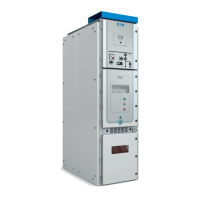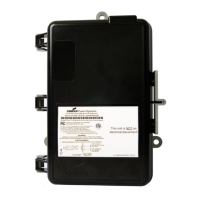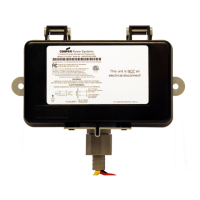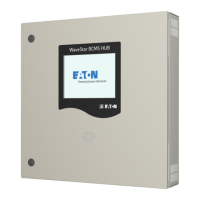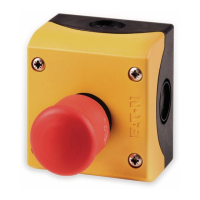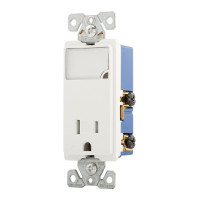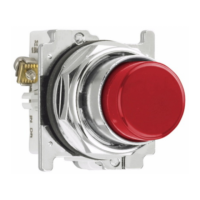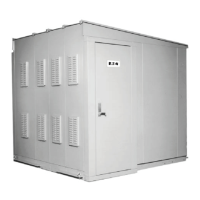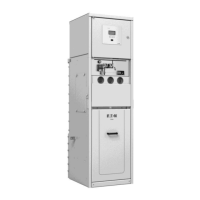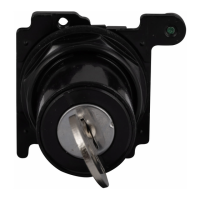13
Instruction Manual IM01500001E
Effective July 2011
Pow-R-Line switchboards
EATON CORPORATION www.eaton.com
Pre-energizing procedures and inspection
Before energizing any switchboard, perform a comprehensive
inspection to make certain that the switchboard is ready to be
energized. This includes the following steps:
1. Verify that the switchboard is not energized.
2. Visually inspect the switchboard and remove all foreign materials,
such as tools, scraps of wire, and other debris from all switch-
board sections.
3. Remove and discard all packing materials and temporary shipping
braces from the switchboard.
4. Any accumulation of dust and dirt should be removed with a
vacuum cleaner. Use a lint-free cloth to remove dust and dirt
on other surfaces. Never use compressed air as this may blow
contaminants into electrical and/or electronic components. Never
use solvents or other chemicals to clean surfaces or components.
5. Visually inspect all ventilation points to ensure that there is no
blockage or debris. Remove any debris that is present.
6. Verify that all field bus and wire connections have the proper
torque per instructions on the switchboard and on components.
7. All factory connections are made using calibrated power tools.
However, vibrations do occur in transit and handling. Verify
factory connections by checking at least 10% of the total factory
connections for tightness. If this spot check reveals loose
connections, proceed to check all factory connections. These
connections include bus hardware connections, circuit breaker
and switch terminals, contactors, metering, and other connec-
tions, including the incoming terminals.
8. Visually inspect switchboard insulators, busbar, and conductors
for damage. DO NOT ENERGIZE IF DAMAGE FOUND.
Contact Eaton.
9. If fusible switch type overcurrent devices are used, verify that
proper fusing has been selected and installed. Eaton does not
typically supply switchboards with these fuses.
Overcurrent devices
Overcurrent devices are typically shipped in either the open (OFF)
or “tripped” position. Manually close, and then open these devices
to ensure that they are functioning properly. At the completion of
this process, be sure that the overcurrent device is in the OFF or
“tripped” position.
Inspect overcurrent devices for any visible damage. If damage is
found, DO NOT ENERGIZE the switchboard. Contact Eaton.
Circuit breakers
Some circuit breaker types provide the ability to adjust trip settings.
When shipped, settings are typically at the minimum rating. There
are two types of trip units included in this group: adjustable thermal
magnetic and electronic trip units.
Thermal magnetic trip units may have an adjustable magnetic
setting. Use the engineering study recommendations, if available,
to adjust to the proper setting. Low magnetic settings feeding high
inrush loads, such as motors, could nuisance trip on startup. For
specifics on breaker types, consult the circuit breaker instruction
leaflets shipped with the switchboard.
Electronic trip units have several settings depending on the breaker
ordered. Electronic trip units may include long-time (L), short-time
(S), instantaneous (I), and ground fault (G) settings. These trip units
are available in combinations LS, LSI, LSG, and LSIG. Check the
electrical drawings, engineering study, or the engineer’s recommen-
dations for these trip unit settings. For details on each type, refer to
the Eaton circuit breaker and electronic trip unit instruction leaflets
shipped with the switchboard.
For certain breakers with electronic trip units, a portable test kit is
available from Eaton. An auxiliary power module is included in the
test kit. This auxiliary power module powers the electronic trip unit
when the board is de-energized and allows testing. The kit includes
complete instructions and test times for testing long-time, short-
time/instantaneous operations, and optional ground fault operation
of the circuit breakers.
Figure 25. Circuit Breakers
Circuit Breaker with
Adjustable Magnetic
Trip Unit
Circuit Breaker with
Electronic Trip Unit

